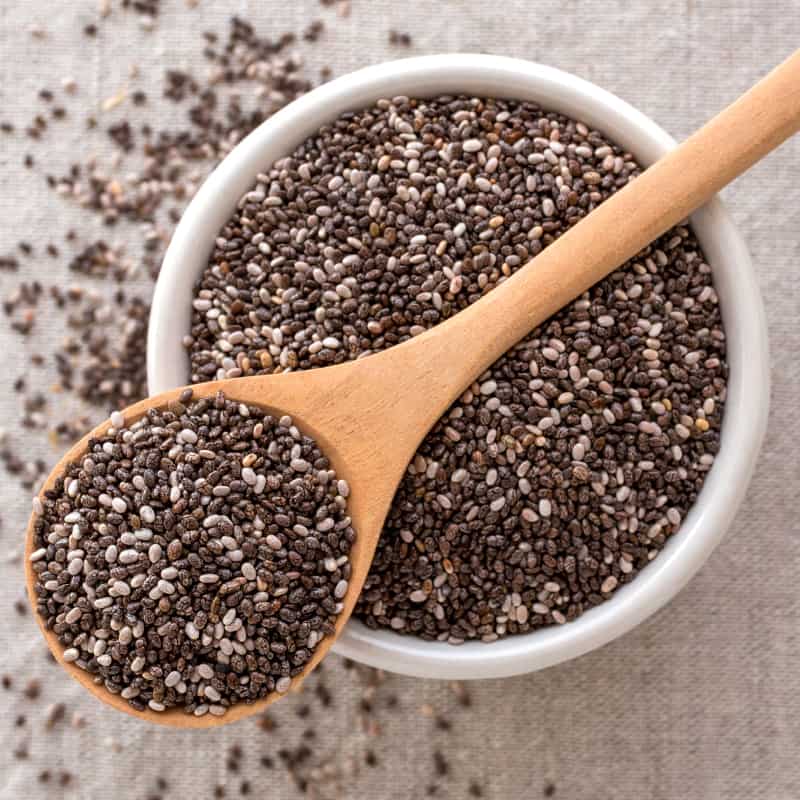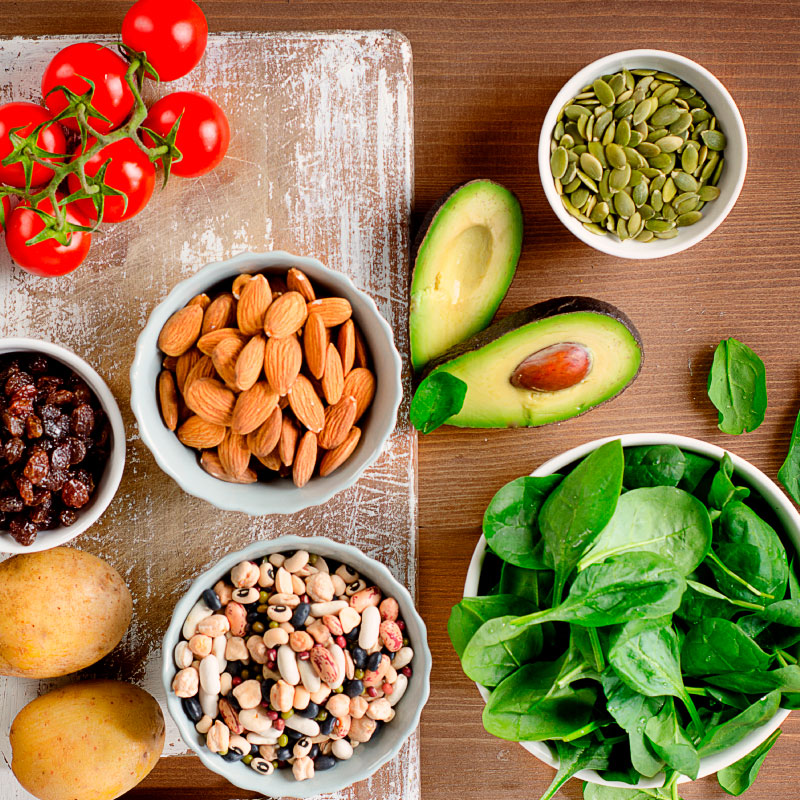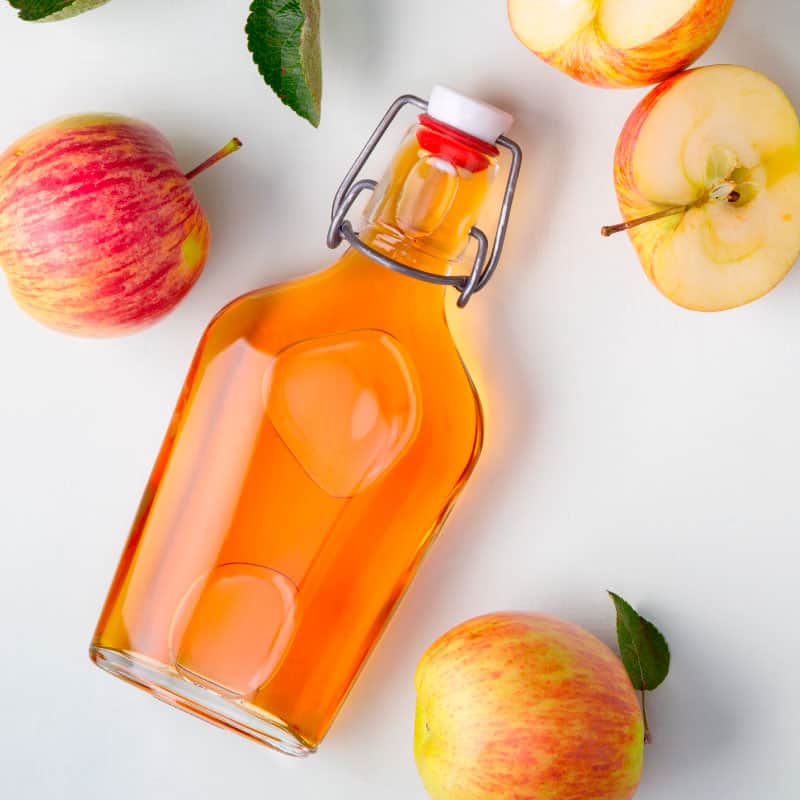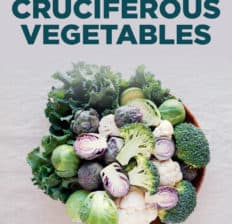This Dr. Axe content is medically reviewed or fact checked to ensure factually accurate information.
With strict editorial sourcing guidelines, we only link to academic research institutions, reputable media sites and, when research is available, medically peer-reviewed studies. Note that the numbers in parentheses (1, 2, etc.) are clickable links to these studies.
The information in our articles is NOT intended to replace a one-on-one relationship with a qualified health care professional and is not intended as medical advice.
This article is based on scientific evidence, written by experts and fact checked by our trained editorial staff. Note that the numbers in parentheses (1, 2, etc.) are clickable links to medically peer-reviewed studies.
Our team includes licensed nutritionists and dietitians, certified health education specialists, as well as certified strength and conditioning specialists, personal trainers and corrective exercise specialists. Our team aims to be not only thorough with its research, but also objective and unbiased.
The information in our articles is NOT intended to replace a one-on-one relationship with a qualified health care professional and is not intended as medical advice.
Cruciferous Vegetables: Cancer Killer or Thyroid Killer?
February 1, 2023
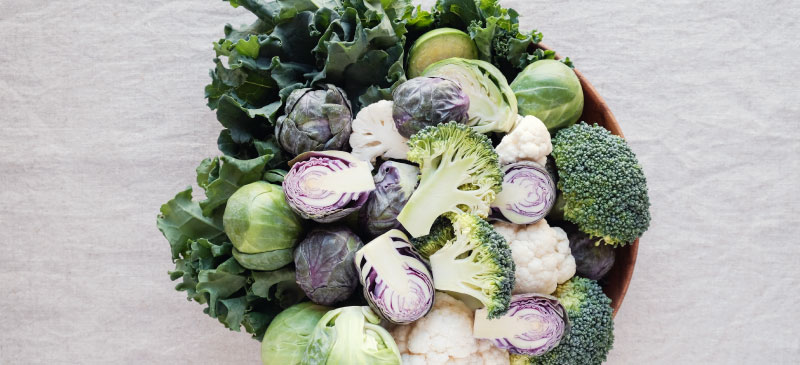
Cruciferous vegetables have generated a lot of buzz over the past decade or so, both because of their impressive health benefits and their potential side effects. While some say that these nutrient-packed vegetables can do everything from help kill off cancer cells to balance hormone levels, others argue that they can disrupt thyroid function and cause undesirable digestive symptoms.
There are a variety of vegetables that fit into this family, and they’re all low in calories but loaded with vitamins, minerals and antioxidants. Plus, these veggies stand out from other types because they contain many health-promoting compounds that have been associated with a number of health benefits.
Do the benefits outweigh the risks, or should you avoid these controversial crucifers altogether? Here’s what you need to know about cruciferous vegetables.
What Are Cruciferous Vegetables?
Cruciferous vegetables are vegetables that belong to the Brassicaceae family of plants. These plants get their name from the New Latin word “Cruciferae,” which means cross-bearing, due to the cross-like shape of their flowers.
Native to Europe, the Mediterranean and the temperate regions of Asia, these vegetables have amassed widespread popularity and are now cultivated around the world.
These vegetables are low in calories but packed with nutrients. Although the individual nutrition profiles can vary, cruciferous vegetables tend to be high in vitamin A, vitamin C and vitamin K, as well as dietary fiber.
Cruciferous vegetables are also unique because they possess sulfur-containing compounds called glucosinolates, which have been shown to have cancer-fighting properties. They have also been linked to a long list of health benefits, including improved heart health, increased weight loss and reduced inflammation.
Cruciferous vegetables have been a dietary staple around the world for thousands of years. In fact, scientists have even discovered preserved seeds from the Brassicaceae family in China dating back to somewhere between 4000 and 5000 B.C.
Several of these vegetables were even used medicinally in ancient Greece. For example, Greek physicians like Hippocrates widely recommended mustard as a natural treatment for scorpion stings.
During the Middle Ages, cruciferous vegetables achieved widespread popularity and became common across Europe. By the 16th century, vegetables like cabbage were considered a cure for many ailments. In fact, many Germans and Flemish even began consuming cabbage before and after meals to promote better health.
In the following years, cruciferous vegetables were used as a treatment for just about anything, from swollen spleens to heart pain and venomous snake bites. Mustard seed was said to cure toothaches while horseradish root was mixed with white wine and bitter apple to treat jaundice.
Today, these nutritious vegetables have spread throughout the world and are major ingredients in many types of cuisine. As more research has unearthed new health benefits of these nutritious vegetables, they have continued to skyrocket in popularity.
Vs. Non-Cruciferous Vegetables
Cruciferous vegetables belong to the Brassicaceae family of plants and are loaded with tons of health-promoting properties. In particular, these veggies stand out because they have many sulfur-containing compounds, including sulforaphane, glucosinolates and indole-3-carbinol.
Still, there are plenty of other non-cruciferous vegetables that boast powerful health benefits as well. Spinach, for example, is not considered a cruciferous vegetable but still packs in quite a punch in terms of nutrition, with tons of vitamin A, vitamin K and antioxidants in each serving.
Here are a few other non-cruciferous vegetables that can also be healthy additions to your diet:
- Asparagus
- Carrots
- Celery
- Chard
- Cucumbers
- Garlic
- Ginger
- Sweet Potatoes
- Zucchini
Related: What Is Daikon Radish Good For? Nutrition, Benefits & Recipes

Top 16 Cruciferous Vegetables
There are plenty of ways to take advantage of the many cruciferous vegetables benefits. Here is a cruciferous vegetables list highlighting the many veggies that you can include in your diet — from veganism to Paleo to the ketogenic diet and beyond — to take advantage of the multitude of health benefits:
- Arugula
- Bok Choy
- Broccoli
- Brussels Sprouts
- Cabbage
- Cauliflower
- Collard Greens
- Kale
- Kohlrabi
- Maca
- Mizuna
- Mustard Greens
- Radish
- Rutabaga
- Turnip
- Watercress
Related: The Antioxidant Power of Swiss Chard Nutrition
Benefits
1. Contain Cancer-Fighting Compounds
Cruciferous vegetables are packed with potent cancer-fighting properties. Not only are they high in antioxidants that can help neutralize cancer-causing free radicals, but they also contain compounds like glucosinolates and indole-3-carbinol, which have been shown to ward off cancer.
There have been multiple studies showing an association between consumption of cruciferous vegetables and cancer prevention. For example, one review comprised 94 studies and reported that a higher intake of cruciferous vegetables was linked to a lower risk of lung, stomach, colon and rectal cancer.
Be sure to fill your plate with other cancer-fighting foods as well, such as berries, citrus fruits, nuts and seeds.
2. Can Reduce Inflammation
Inflammation is a normal immune response designed to protect the body against illness and infection. Chronic inflammation, on the other hand, is at the root of most diseases and believed to contribute to conditions like heart disease, cancer and diabetes.
Without a doubt, cruciferous vegetables top the charts as some of the best foods when it comes to relieving inflammation. One study in 2014 published in the Journal of the Academy of Nutrition and Dietetics showed that a higher intake of cruciferous vegetables was associated with up to a 25 percent reduction in markers of inflammation among 1,005 women.
Reducing inflammation can also benefit inflammatory conditions like rheuamtoid arthritis, ulcerative colitis and asthma. Some of the other top anti-inflammatory foods include beets, celery, blueberries and pineapple.
3. Help Regulate Blood Sugar
Cruciferous vegetables supply a good amount of dietary fiber in each serving. In fact, a half cup of cooked Brussels sprouts, for example, contains two grams of fiber.
Fiber slows the absorption of sugar in the bloodstream, preventing spikes and crashes in blood sugar. Additionally, one 2016 study out of China found that a higher intake of cruciferous vegetables was associated with a significantly decreased risk of type 2 diabetes among 306,723 participants.
For best results in maintaining normal blood sugar, pair a serving or two of cruciferous vegetables each day with plenty of physical activity and an overall healthy lifestyle.

4. Promote Weight Loss
Looking to shed a few extra pounds and lose weight? Loading your plate up with cruciferous vegetables may be one of the easiest ways to bump up weight loss.
Not only are these vegetables low in calories, but they’re also high in fiber. Fiber moves slowly through the gastrointestinal tract undigested, promoting satiety and warding off cravings.
One 2009 study conducted at the Brigham Young University College of Health and Human Performance followed 252 women over a 20-month period and found that each gram of fiber consumed reduced body weight by half a pound and dropped body fat by 0.25 percent.
Furthermore, a study published in PLoS One found that each serving of cruciferous vegetables was associated with 0.68 pounds of weight loss over a two-year period.
Of course, it takes more than just adding a serving of broccoli to your diet each day to reach your weight loss goals. Be sure to fill your diet with plenty of other fruits and veggies, minimize your intake of ultra-processed foods, and get in a good amount of exercise each week.
5. Enhance Heart Health
Upping your intake of cruciferous vegetables is one easy way to combat heart disease to keep your heart healthy and strong.
Some studies have found that increasing your consumption of vegetables in general could decrease your risk of heart disease and heart problems. Plus, a massive study published in the American Journal of Clinical Nutrition followed 134,796 adults over an average period of 10 years and found that a higher intake of vegetables — and especially cruciferous vegetables — was associated with a lower risk of death from heart disease.
In addition to eating lots of cruciferous vegetables, there are plenty of other ways to reduce your risk of coronary heart disease. Minimize your alcohol intake and quit smoking, try some natural stress relievers, and follow a healthy diet and lifestyle to make a major impact on heart health.
6. Promote Estrogen Balance
Estrogen is the primary female sex hormone responsible for regulating the reproductive system. However, too much estrogen can disrupt your balance of hormones and cause symptoms like bloating, irregular menstrual periods, a decreased sex drive and headaches.
Researchers have found that there may be an association between cruciferous vegetables and estrogen levels. This is thanks to the presence of indole-3-carbinol, a compound that is found in cruciferous vegetables that helps regulate estrogen activity and metabolism.
Because of this compound, filling up on cruciferous veggies may be able to help regulate estrogen levels to prevent adverse side effects.
You can also help balance your hormones naturally by swapping carbs for healthy fats, using essential oils and adaptogenic herbs, and making sure you’re getting enough sleep each night.
Risks and Side Effects
Despite the many health benefits of cruciferous vegetables, there may be some adverse side effects to consider as well.
One common concern is the association between cruciferous vegetables and gas. The fiber found in these vegetables undergoes fermentation in the large intestine, which can cause excess flatulence. For this reason, it’s best to increase fiber intake slowly, chew food thoroughly and pair with higher fluid intake.
There is also some concern about the relationship between cruciferous vegetables and thyroid problems. When eaten raw, the digestion of cruciferous vegetables in the intestines releases goitrogens, which can increase the need for iodine and can cause damage to the thyroid gland.
However, research shows that it would take a large amount of cruciferous vegetables to cause thyroid damage, and it’s likely only to be an issue if someone also has an iodine deficiency. If you do have thyroid issues, it’s best to only eat cruciferous vegetables that have been cooked and limit your intake to about one to two servings per day.
Although generally safe for most people, some people may be allergic to specific types of cruciferous vegetables. If you experience any food allergy symptoms like swelling or hives after consumption, discontinue use immediately, and talk to your doctor.
Additionally, cruciferous vegetables are considered goitrogenic, meaning they could disrupt the production of thyroid hormones. Research shows that it would take a large amount of raw cruciferous vegetables to cause hypothyroidism, but those with thyroid conditions should still be mindful of their intake. Limit consumption to one to two servings per day, and opt for cooked vegetables rather than raw.
Finally, eating lots of cruciferous vegetables may cause flatulence for some people due to the high fiber content. Increase fiber intake slowly, drink plenty of water and cut back a bit if excess gas becomes a problem.
Related: Foods High in Sulfur and Their Benefits
How to Use (Recipes)
As some of the most dominant food crops worldwide, cruciferous vegetables are easily accessible no matter where you are located. They can be found at farmers markets or in the produce aisle of grocery stores.
Frozen varieties are also available for some vegetables, such as Brussels sprouts or broccoli.
There are plenty of ways to eat and enjoy these super healthy vegetables year-round. Most can be boiled, sautéed, roasted or baked and consumed on their own or as part of a nutritious dish.
Certain types, such as kale, arugula and watercress, can even be eaten raw or made into a hearty salad.
There are limitless ways to incorporate these super nutritious vegetables into your diet, from salads to stir-fries, casseroles and more. Here are a few cruciferous vegetable recipes to get you started:
- Crockpot Beef and Broccoli
- Roasted Kale and Chickpea Salad
- Sauerkraut
- Garlic and Ginger Bok Choy
- Roasted Brussels Sprouts
Final Thoughts
- Cruciferous vegetables are vegetables in the Brassicaceae family of plants.
- They are low in calories but high in vitamin A, vitamin C, vitamin K and antioxidants. They also possess sulfur-containing compounds that have been associated with many health benefits.
- Studies show that cruciferous vegetables contain cancer-fighting compounds and can help reduce inflammation, regulate blood sugar, promote weight loss, enhance heart health and balance estrogen levels.
- High amounts of these vegetables may cause excess gas and thyroid damage. If you have thyroid issues, cook vegetables and limit intake to one to two servings daily.
- Try boiling, sautéing, roasting or baking cruciferous vegetables, and enjoy alone or as part of a nutritious meal.
- Combine with a diet rich in other fruits and vegetables, plus heart-healthy fats, lean proteins and whole grains for best results.






